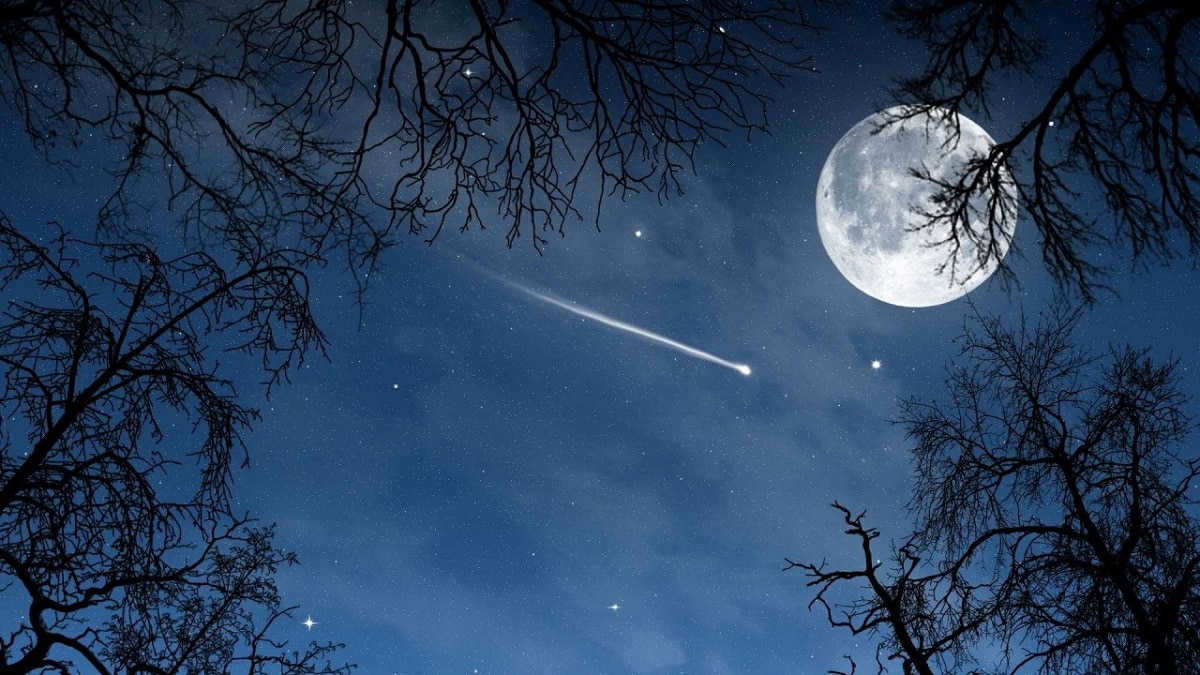
You have likely witnessed the phenomenon of Estrella Fugaz and have performed the customary act of making a wish. Shooting stars can be observed on a cloudless night, amidst a celestial backdrop, particularly during specific periods throughout the year. However, what exactly is a shooting star? Is it potentially dangerous? And what is its source of origin?
In the subsequent paragraphs, we will provide you with an in-depth understanding of shooting stars, including their inception, distinguishing features, and intriguing facts.
What exactly is a shooting star?
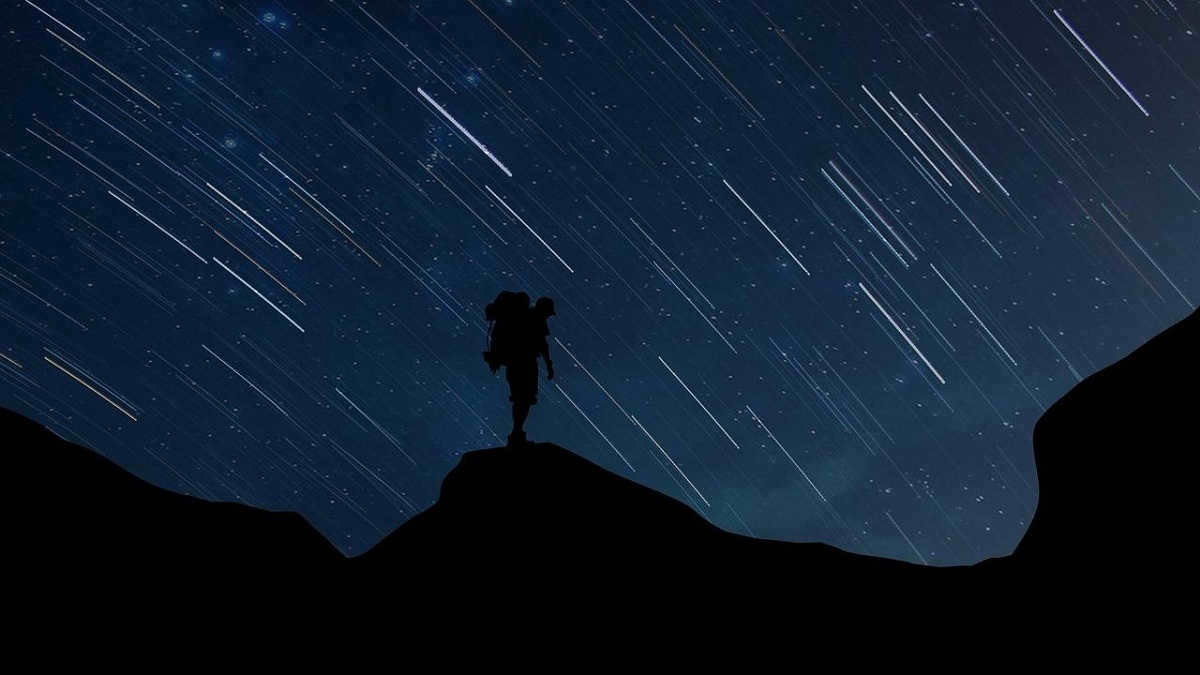
A meteor shower, also known as shooting stars, refers to the phenomenon where small particles, typically ranging from millimeters to a few centimeters in size, enter the Earth’s atmosphere at high speeds. Upon entering the atmosphere, these particles experience air friction, causing them to emit a glowing light (specifically, through ionization). This process creates a rapid light path across the sky, commonly referred to as a shooting star.
If the particle is of considerable size (a few centimeters), the shooting star will shine brightly, known as a fireball. We witness orbs of ionized atmosphere enveloping them. The luminosity of these celestial objects is truly awe-inspiring, rendering them even more captivating in daylight. Some might deviate from their trajectory, emitting bursts of light or small explosions, or emitting sounds. Frequently, they leave behind a lingering trail (this being the trail of ionized air they create) or a smoky residue. Occasionally, they can be intense enough to shine through the cover of clouds, causing the clouds to briefly illuminate.
At what time are they visible?

Observing shooting stars is possible on any clear night, although there are more occurrences on specific nights throughout the year. The friction caused by the atmosphere can cause meteors weighing several kilograms to burn up. However, if the particle is too large, it will not fully disintegrate and will not reach the Earth’s surface. Therefore, it is referred to as a meteorite. Microscopic and even larger meteorites have arrived on our planet.
One of the most notable meteor showers is the Perseids, also known as the tears of St. Lawrence. They are most likely to be seen in the sky in mid-August.
- If you want to enjoy a clear and unobstructed view of the starry sky, it’s best to leave the city at night and find a spot in a field where there is minimal or no light pollution. The presence of artificial light in cities is a major obstacle to seeing the stars, so it’s necessary to distance ourselves from urban areas.
- To ensure optimal stargazing conditions, it’s crucial that the sky is completely clear. Clouds can obstruct our view of the stars, so it’s best to choose a night with no cloud cover. Additionally, it’s not ideal to go stargazing during a full moon, as the bright reflection of the moon can also contribute to light pollution and interfere with our ability to see other stars that are nearby.
- Avoid using binoculars or telescopes. Observing directly with the naked eye is more effective, especially when your eyes have adjusted to the darkness and starlight.
The origin and history of shooting stars
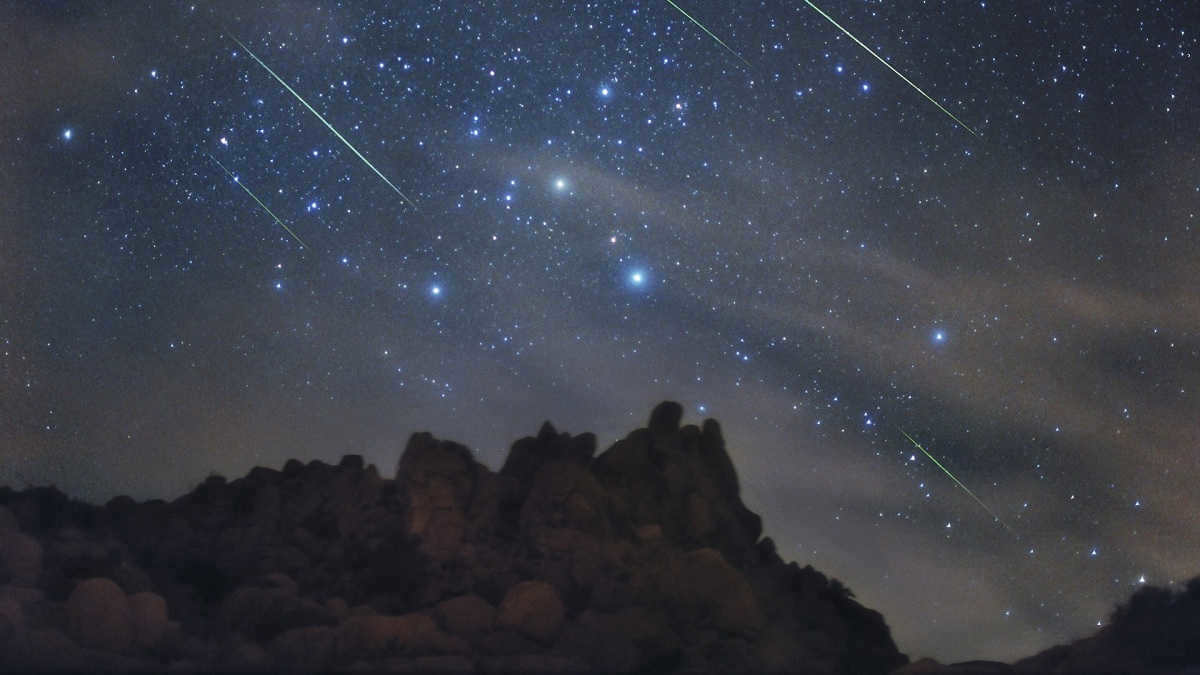
When we see shooting stars in the night sky, they appear as distant shining stars moving across. However, it’s important to note that shooting stars are not actual stars, and they are not located far away. In the past, people believed that meteors were associated with weather phenomena, similar to lightning or thick fog. Nevertheless, our understanding has evolved, and now we recognize that shooting stars are actually objects originating from outer space. These objects are fragments of rock in various sizes that float in space. Some of these rocks, known as meteoroids, are drawn towards the Earth and enter our atmosphere. This attraction is partially due to the gravitational force of our planet, which makes larger planets more likely to attract these objects.
These small rocks, which are mostly the size of a grain of sand, travel very close to the earth’s surface. They can reach speeds of up to 80 kilometers per second, and as they move through the air, they experience friction that causes them to heat up and emit light, resembling stars. When you observe a shooting star, you are actually witnessing a meteor burning up in the atmosphere. However, these shooting stars are often fleeting, lasting only a second or two before completely disappearing. Occasionally, some meteors are not entirely consumed by our atmosphere and actually make it to the Earth’s surface. It is estimated that around 75 million meteors collide with our atmosphere on a daily basis.
Interesting Facts
It is worth mentioning that the brightness and frequency of shooting stars can vary significantly. We witness a high number of smaller shooting stars with lower brightness, and a smaller number of larger stars that are less bright.
When a shooting star is of considerable size, it can leave behind traces of ionized air that may last for several minutes. The tail of a shooting star glows, and its color is determined by the ionized gas it contains. For instance, a green trail may be caused by ionized (atmospheric) oxygen. Furthermore, the evaporating elements of a shooting star will produce a color that corresponds to its emission spectrum, which is also influenced by the temperature it reaches during its descent.
I trust that this information will help you gain a deeper understanding of shooting stars and their unique characteristics.
The article’s content aligns with our editorial ethics guidelines. If you notice any mistakes, please click here to report them.
Summary of the Full Article: Network Meteorology “astronomy” Meteor showers
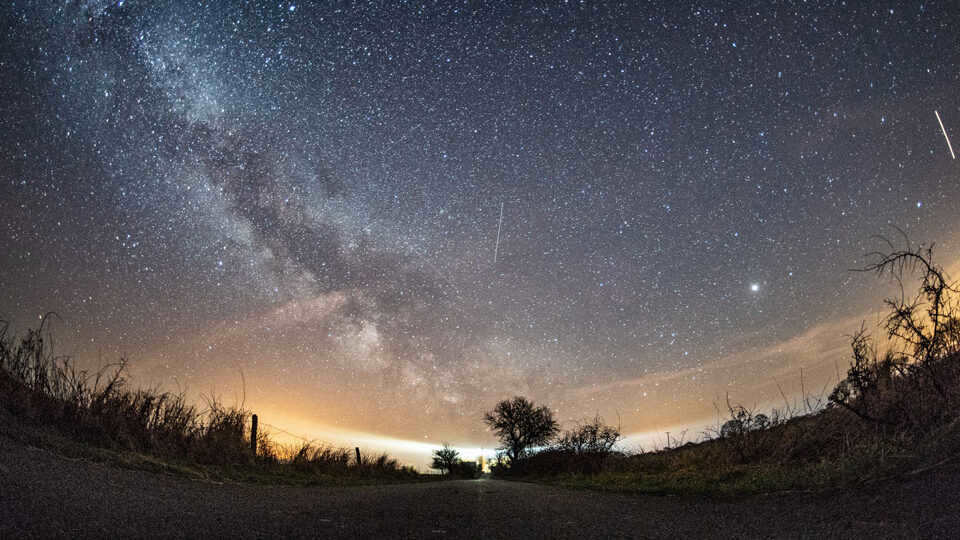
The Perseids are an annual meteor shower that occurs in the sky during the months of July and August. The shower gets its name from the fact that the meteors appear to originate from the constellation Perseus.
This meteor shower has a long history, with mentions of it dating back to ancient Chinese chronicles. In fact, records from the 8th and 9th centuries show that the Perseids were regularly observed and recorded in historical documents from China, Korea, and Japan. In Italy, the Perseids are known as the “Tears of St. Lawrence” because they peak on August 10, which is the feast day of St. Lawrence.
When will the Perseids stargazing begin
The Perseids meteor shower starts on July 17th and ends on August 24th, providing a wide celestial spectacle. In 2023, the peak intensity of the meteor stream will occur on two nights – from August 11th to 12th, and from August 12th to 13th. During this time, the number of visible meteors can reach up to 100 or even 150. The rate of meteor sightings gradually increases and decreases throughout the observation period. On the first and last days of stargazing, it is typical to see only 1 or 2 meteors per hour.
Meteors travel at a speed of approximately 210,000 kilometers per hour and become visible at an altitude of 70 kilometers above the Earth’s surface. Some of the larger meteors will streak across the sky for a few seconds, leaving behind bright trails. It is customary to make a brief wish upon seeing a meteor, such as “Marriage!”, “Money!”, “Cheers!”, or even “World Peace!”
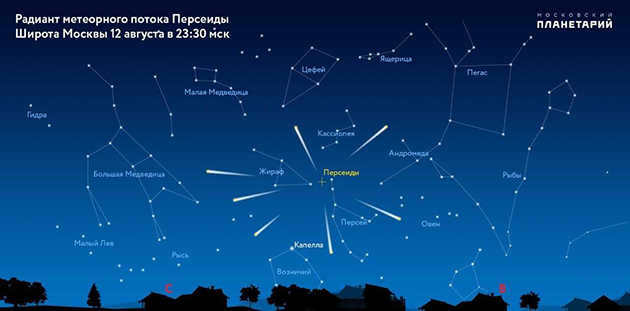
Experienced stargazers suggest enjoying the beauty of the night sky away from the city, where the darkness allows for better visibility. No telescope or binoculars are needed to see the shooting stars – they can be seen clearly with the naked eye.
During the Perseids meteor shower, we may also witness the Capricornids shooting stars. However, it is easy to differentiate between the two. The Perseids are typically white, while the Capricornids exhibit shades of orange and yellow.
BACKGROUND “KP”
Discovered in 1862, Comet Swift-Tuttle has an orbital period of 135 years. Its most recent appearance was in 1992. It is predicted to return in 2126, approaching our planet at a distance of 23 million kilometers. In 4479, it will come even closer, at a distance of 4.5 million kilometers. If Earthlings decide to stay, they will witness a spectacular display of colors. This massive comet has a nucleus with a diameter of 26 kilometers, which explains why it leaves such a trail of particles. It’s like a larger ship leaving more dirt behind.
NASA astronomers have confirmed that the number of meteors falling to Earth from the comet’s tail has been increasing since 2008. This suggests that the current observations may yield fruitful results, making stargazing a truly vibrant experience.
Where and when to observe
The optimal time to start observing the descending Perseids is at 11 pm local time, while facing northeast. The intensity of the meteor shower gradually increases after midnight, peaking between approximately 2 and 4.30am.
The Perseus constellation can be found in the northern part of the sky. To simplify your search, try locating the Cassiopeia constellation, which resembles the letter “W”. Slightly to the left and below will be the Perseus constellation.
There should be no significant obstacles to stargazing this year. The moon will be in its crescent phase, providing minimal interference with the meteor shower. The only potential hindrance could be clouds obstructing the view of the falling Perseids.
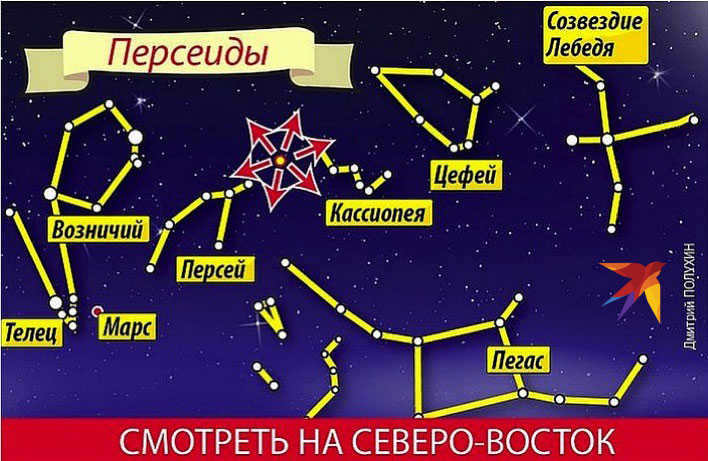
The Astrological Significance of the Perseids
Since ancient times, the regular appearance of streams of stars has been attributed with mystical meaning. Our ancestors believed that by making a wish on a falling star, it would come true. And often, it did. That’s why even today, many people, including those with higher education, still make wishes.
On the night of August 12-13, there is a tradition of infusing various items with positive energy. It is especially beneficial on this day to prepare meals using vegetables, fruits, grains, and honey. This day is also highly suitable for engaging in spiritual practices and meditation.
Astrologers claim that observing the stars comes with an influx of energy. Esotericists believe that in the constellation Perseus, there exists a battle between Light and Darkness, resulting in the Perseid energy flow having a conflicting nature. While some individuals will be compelled to fight for justice, others will prioritize protecting their own interests. It is highly advised to abstain from aggressive behavior during the stargazing period, instead opting to display tolerance towards loved ones and extend compassion to others.
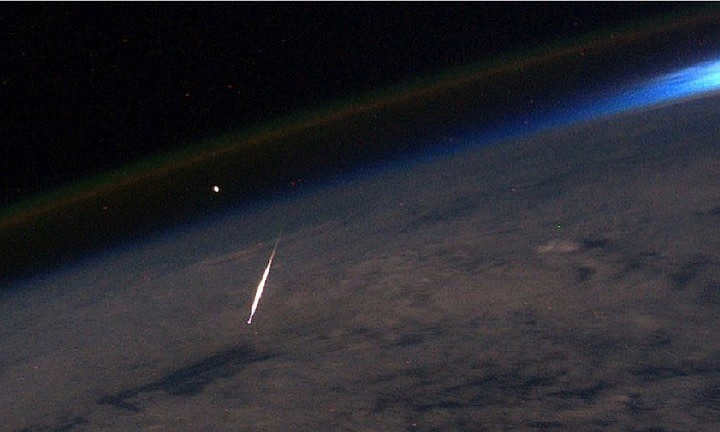
Expert’s point of view
Andrey Naydenov, a teacher of physics and mathematics at TutorOnline school:
– Meteor showers are one of nature’s most breathtaking phenomena. Making a wish upon a shooting star is an ancient superstition. A shooting star is usually a rare and special occurrence in the night sky. But what if you could see 50 or more shooting stars in just one hour? Just imagine the countless wishes that could be made in a single night! For this reason, observing meteor showers has become a popular and extravagant pastime for many people around the world.
Certainly, it is common knowledge that what we are witnessing is not the descent of celestial bodies, but rather the descent of meteors – minuscule fragments of cosmic objects that gather in vast clusters and hurtle through their well-documented orbits at incredible velocities. These clusters, known in scientific circles as meteor streams, occur when the paths of Earth and these streams intersect in the great expanse of space. At this point, countless space rocks collide with our planet’s atmosphere, reaching astonishing speeds and incinerating as they heat up to extreme temperatures in the uppermost layers of the atmosphere, creating a mesmerizing spectacle.
This meteor shower is connected with the Swift-Tuttle comet. Its radiant, which is the point in the sky where the meteor shower appears to originate from, can be found in the Perseus constellation.
Valentin Kozheshkurt, a senior methodologist at the Internet Lesson Home School for physics and mathematics:
– We witness a meteor shower when the Earth enters the path of a swarm of meteors – the numerous fragments left behind after a comet completely or partially disintegrates. These fragments enter the Earth’s atmosphere and, as they burn up, create a bright streak of light – what we commonly refer to as a “shooting star”.
One example of such a comet is the Swift-Tuttle comet. Similar to other comets, it follows a highly elongated path around the Sun and approaches the Sun (and consequently the Earth) once every 130 years or more. However, the trail of small fragments it leaves behind, known as the meteor swarm, remains in close proximity to its trajectory.
Each year in August, as the Earth orbits the Sun, it returns to this region and we have the opportunity to observe the Perseids meteor shower during this time. The area of the meteor swarm is quite diffuse, making it difficult to determine a precise start and end to the meteor shower as the Earth enters and exits the swarm.
The Perseids meteor shower lasts approximately one month, with the intensity gradually increasing and then decreasing. Therefore, it is only possible to designate specific dates for the meteor shower conditionally. Typically, attention is focused on the day when the intensity of the meteor shower reaches its peak – August 12.
Undoubtedly, stargazing is one of the most mesmerizing wonders of nature. In this article, we will guide you on how to observe shooting “stars” in the best conditions this year. Check out the starfall calendar for 2023 in the “Komsomolka” publication.
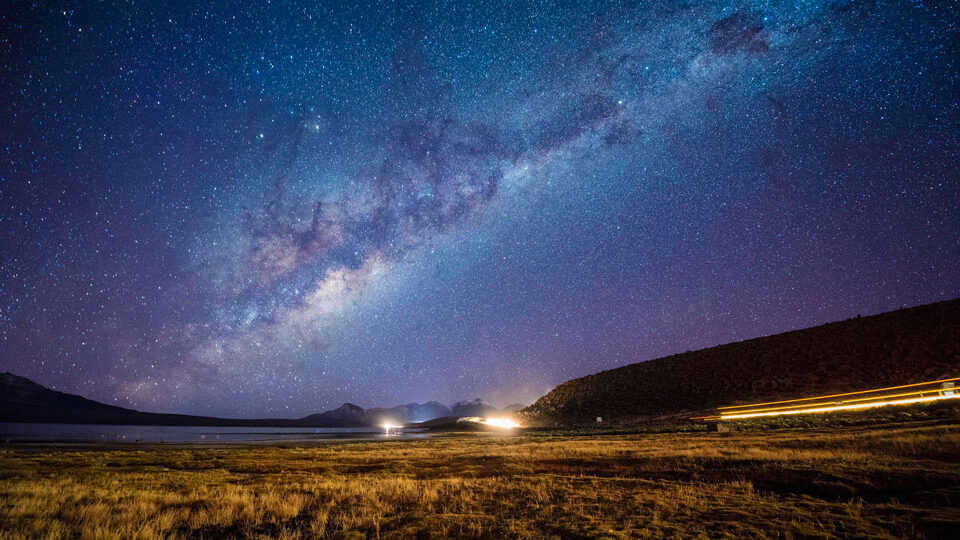
Most stargazers, also known as meteor streams, are produced by comets. These meteor streams follow specific orbits in space, allowing stargazers to be visible during specific months when Earth intersects their orbit. As they pass through their orbits, they release dust and small particles, which then enter Earth’s atmosphere at incredible speeds of up to 80 kilometers per second. This debris creates vibrant streaks across the sky, leading to the popular saying “stars fall from the sky.” Meteor streams are named after the constellations closest to them, or the constellations that appear to be the source of the meteorites.
It is important to differentiate between the terms “meteor shower” and “meteor storm”. A meteor shower, also known as a “fire rain”, occurs when a large meteoroid disintegrates and its fragments burn up in Earth’s atmosphere. The meteor shower is made up of individual meteors that produce a more intense glow as they burn up.
Scientists have verified the existence of 64 meteor streams, but they believe that there are over 300. The brightest and most intense meteor showers are much smaller, with only a few dozen meteors.
Quadrantids
The Quadrantids are one of the most impressive yet ephemeral meteor showers. They occur from late December to almost mid-January, with the peak falling on the night of January 3-4. During this time, Earth witnesses an average of 1-2 “shooting stars” per minute, which is quite remarkable. However, the observation of the Quadrantids in 2023 will be hindered by the presence of a full moon.
The radiant of the Quadrantids, the point in the sky from which the meteors appear to originate, is located in the constellation of Boötes. The stars that comprise this radiant were originally part of the now-obsolete constellation Quadrans Muralis, which gave the meteor shower its name. Although these stars have since been reassigned to other constellations such as Boötes, Hercules, and Draco, the name of the meteor shower, discovered in 1825, has remained unchanged.
Lyrids
The Lyrids meteor shower will occur from April 15 to April 29, 2023. The peak of the meteor shower is expected to be on April 21-23. The best time to observe the Lyrids will be during the 1-2 hour period between moonset and sunrise. Typically, the rate of meteor activity is relatively low, with about 20 meteors per hour. However, there are occasions when there is a sudden increase in meteor activity, with up to 100 meteors burning up per hour. This provides a particularly vibrant and colorful spectacle for stargazers.
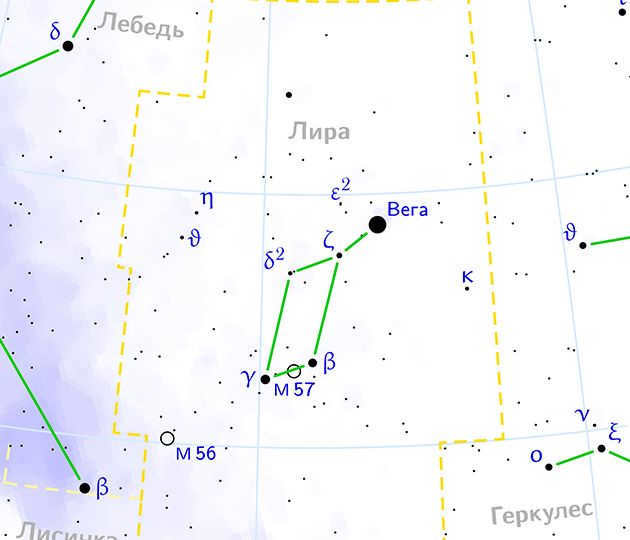
Lyrids are an ancient meteor shower that has been observed by humans for centuries. The earliest record of this phenomenon dates back to 687 BC when the Chinese first witnessed and documented the awe-inspiring sight of “stars falling like rain”. During that time, the meteor shower was much more intense and captivating.
In 1861, which coincided with the abolition of serfdom in Russia, the Lyrids experienced a slight surge in activity due to the close proximity of comet C/1861 G1 Thatcher to Earth. It is predicted to return in 2276, potentially revitalizing the meteor stream once again.
The dust and pebbles left behind by the comet enter the Earth’s atmosphere at altitudes ranging from 120 to 100 kilometers. Upon entry, they plummet at an astonishing speed of 49 kilometers per second and create brilliant white flashes as they disintegrate.
Sometimes the Lyrids can surprise us by suddenly intensifying over certain areas of the Earth. For instance, in 1922, Ukraine experienced a shower of 2 thousand meteors per hour. In 1982, the United States saw about a hundred meteors per hour, and in 1985, it was the Crimea’s turn to be “bombed” with meteors.
This-Aquarids
The This-Aquarids will be active from April 15 to May 27 in 2023. This means that they will be falling at the same time as the Lyrids for a while. Unfortunately, their peaks do not coincide. The Aquarids will reach their highest intensity on May 5-6, when the Lyrids have already finished. During this time, we can expect to see 10-30 “stars” falling per hour shortly before dawn.

The meteors are called Aquarids because they originate from the Aquarius constellation. The radiant point of the Aquarids is the brightest star in Aquarius. These meteors are actually remnants of the famous Halley’s comet.
The Aquarids produce bright streaks as they enter the Earth’s atmosphere at a speed of approximately 65.5 kilometers per second. The best time to observe them is during the early morning hours. Experts recommend lying down with your feet facing east to get the best view.
The Arietids meteor shower can be observed between May 20 and June 2.
The peak of the Arietids meteor shower occurs on June 7. It is expected to have up to 60 meteors per hour.
Although most of the meteors will enter the Earth’s atmosphere during the daytime and will not be visible, observers can still detect them using radio waves.
However, some meteors from the Arietids stream can be seen about an hour before sunrise if they did not fall during the day. The radiant point of the meteor shower is located in the constellation Aries.
June Bootids
The name of this meteor shower was given by the Volopassus constellation (Voo in Latin). The Bootids are created by debris from comet 7P/Ponsa-Winnecke, which Earth’s orbit intersects each year.
Unfortunately, the current June Bootids are not as impressive as they used to be. They have weakened over time. In the past, there would be dozens of shooting stars per hour, but in recent years, only a few meteors have been observed. However, there are occasional bursts of activity. The last one occurred 20 years ago, when observers witnessed 100 shooting stars per hour. It is possible for this to happen again, as the intensity of the meteor shower is considered unpredictable.
The first sightings of the June Bootids can be expected on June 22, which is one of the shortest summer nights. The meteor shower continues until July 2.
July-September
Perseids
The Perseids have rightly been referred to as the top summer stargazing event. Although its duration spans from July 17 to August 24. The pinnacle of the meteor shower in 2023 falls on two consecutive summer nights, August 11th to 12th and August 12th to 13th. Anticipate witnessing up to 100 shooting stars per hour. Notably, in 1863, observers documented 215 luminous bursts per hour in the night sky.

Observing the Perseids typically begins at 11 pm local time. The intensity of the meteor shower usually increases after midnight and reaches its peak around 4.30 am.
The meteor shower is formed by debris left behind by the Swift-Tuttle comet. The comet has passed, but its trail of “garbage” remains. Every year, as the Earth orbits the Sun, it passes through this stream of debris, giving rise to the Perseids meteor shower.
To spot the Perseus constellation, look towards the northern part of the sky, just below and to the left of the Cassiopeia constellation, which resembles the letter “W.”
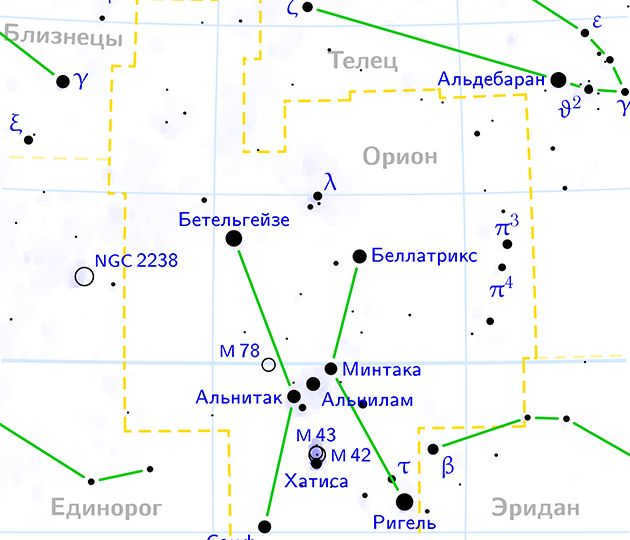
From September 26 to November 22, 2023, the phenomenon of starfall can be witnessed. It is recommended to observe the falling “stars” during the early morning hours of October 22.
The Orionids are meteors that travel at an incredibly fast speed of 66 kilometers per second as they enter the Earth’s atmosphere. They leave behind bright white trails.
For those in the Northern Hemisphere, experts suggest lying down with the left arm outstretched towards the east and the right arm towards the southeast, looking straight up. Alternatively, lying down with feet facing south will also provide a good view of the phenomenon.
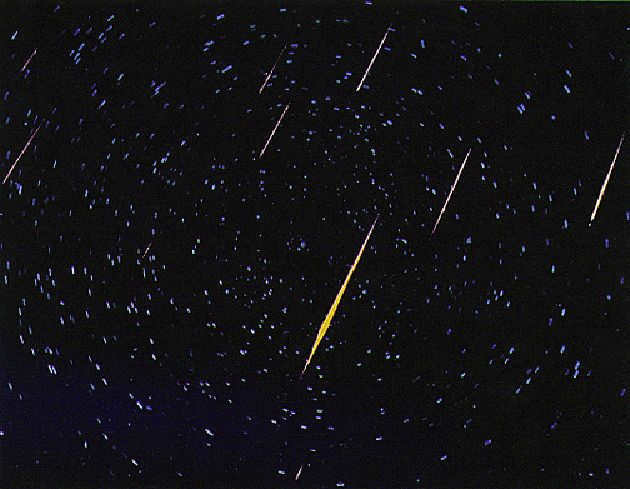
This starburst is a representation of small fragments from the comet Tempel-Tuttle and it originates from the constellation Leo. Along with a few Taurids, which are considered as “relatives” of the Tunguska meteorite, the Leonids fly towards us.
Normally, the meteor stream has an intensity of 10-15 “stars” per hour. However, there are occasions when there are actual star showers. In 1966, thousands of meteorites fell to Earth per minute, which was referred to as a “meteor shower” or even a “meteor storm”.
The comet Tempel-Tuttle comes close to the Sun once every 33 years. During this time, the Leonids are particularly spectacular. On other occasions, thousands of fiery streaks light up the sky. Such a spectacle is anticipated in 2031 during the comet’s next approach to the Sun.
In 2023, the peak of Leonids stargazing is expected to occur from the night of November 3 to December 2, with the peak falling on November 17-18.
Geminids
The Geminids are renowned for being one of the most dazzling and intense annual meteor showers, with the potential for up to 50 shooting stars per hour. It is believed that this meteor shower is formed by the debris left behind by the comet Phaethon, which has transitioned into an asteroid. As a result, the shower can contain not only fine dust particles but also larger stones, resembling fist-sized cobblestones, which create spectacular flashes of light in the night sky. However, their velocity is relatively slow, around 35 kilometers per second. This is because the Geminids do not approach Earth directly but catch up with it instead. They burn up gradually, leaving behind vibrant trails that are predominantly yellow in color. It is said that making a wish upon a shooting star from the Geminids is worth a try.

The Geminid radiant can be found in the constellation Gemini, which is easily visible in the night sky. To locate it, simply face east as darkness falls and look for Orion’s Belt, a trio of bright stars arranged in a line. The radiant will be situated just to the left and slightly below. Gemini is a constellation that belongs to the Northern Hemisphere and can be seen rising high above the horizon during the winter season.
In 2023, the peak of Geminid activity is expected to occur on the nights of December 13 and 14. However, these meteor showers can be observed from November 19 to December 24.
Professional viewpoint
Andrei Naydenov, a physics and mathematics instructor at TutorOnline school:
– The origin of meteor streams is attributed to comets. It is hypothesized that meteor streams are formed as a result of the breakup of comets that currently exist or once existed.
Every year, numerous spectacular meteor streams occur. There is even a calendar that showcases this awe-inspiring phenomenon in all its glory. Each meteor stream is given a unique name, such as Lyrids, Draconids, Orionids, Leonids… Astronomers are aware of the existence of 64 significant meteor formations.
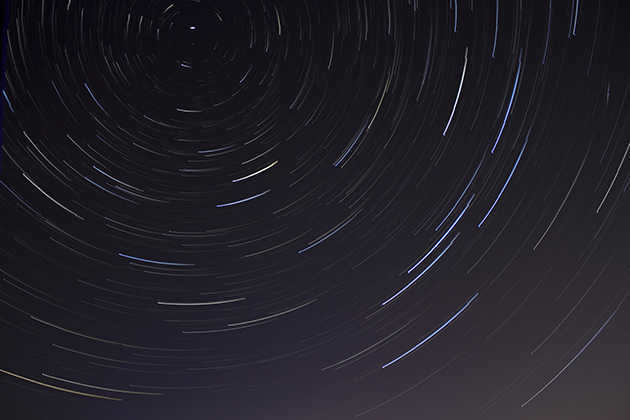
It should be noted that there are still “meteor streams” that form from the destruction of meteoroids. These fragments from outer space can be quite large and often make it to the Earth’s surface. These occurrences are known as “meteor showers”.
In addition to knowing the precise date of the upcoming stellar spectacle, it is important to follow a few simple guidelines. In order to witness the “shooting stars”, there should be no cloud cover and no artificial light pollution from city lights, glowing windows, or street lamps. It is also preferable to have no moonlight, as the moon’s brightness, except during the new moon phase, can significantly obscure the view of falling meteors.
Valentin Kozheshkurt, a senior methodologist at the Internet Lesson Home School for physics and mathematics, explains:
– The term “stargazing” refers to an astronomical occurrence known as a “meteor stream.” This phenomenon happens when the Earth crosses paths with a cluster of meteors – regions with an abundance of small celestial bodies, comprising mostly of space dust and fewer asteroids. However, the question remains: what exactly are these bodies, and why are they concentrated in these particular areas?
Meteor showers are created when comets are destroyed – either completely, when the comet breaks apart, or partially, when it remains intact but leaves behind a trail of these particles. While the reasons for comet disintegration are not crucial for predicting stargazing events, it is important that the meteor showers roughly align with the comet’s trajectory and do not deviate too far from it. This is why stargazing events occur at the same time each year: as the Earth orbits the Sun, it passes through the same regions where meteor showers from various comets have left their mark.
As a result, we witness the same stargazing phenomena annually. The only caveat is to ensure that stargazing events do not coincide with a full moon, as this would hinder our ability to observe them.
The stream is referred to as Volopassus (Voo in Latin) in honor of the Volopassus constellation. The Volotids originated from particles derived from the comet 7P/Ponsa-Winnecke, which intersects the Earth’s orbit on an annual basis.
What causes shooting stars to occur and why do they descend?
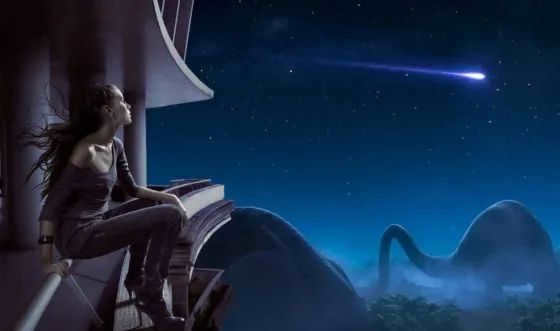
When it comes to the fascinating activity of observing the night sky, one can’t help but ponder: why don’t we witness a multitude of shooting stars every single night? However, thorough stargazing is actually a seasonal occurrence. Most of the time, we catch glimpses of individual stars that emerge from the cosmic darkness and vanish in an instant….
So, what is the origin of shooting stars? Contrary to popular belief, shooting stars are not stars at all, but rather meteor trails…..
A star cannot plummet, as its immense celestial body is securely held in place by the intricate mechanics of the universe. What we perceive as the luminous path of its descent is actually a meteorite.
A meteor is essentially a track, but it originates from minuscule celestial objects – fragments of asteroids and comets. These celestial objects are referred to as meteoroids, and once they make contact with Earth, they are known as meteorites.
The manifestation of meteors
Comets and asteroids are subject to continuous influence. For instance, they collide with other celestial objects and alter their trajectory due to the gravitational pull of a massive planet. Additionally, the solar wind passes over them, causing small particles to dislodge from their surface.
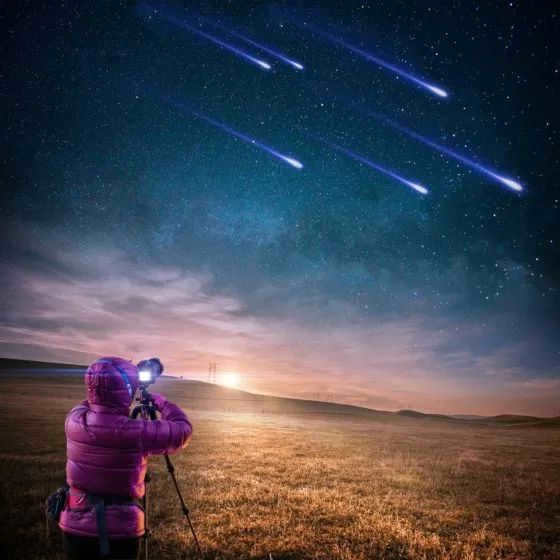
When fragments of comets and asteroids enter Earth’s atmosphere, they undergo a process of burning up. While some of these fragments completely disintegrate, others are able to escape back into space, and those with greater mass will ultimately make their way to the planet’s surface. This process of burning up creates the mesmerizing spectacle known as a shooting star. It is important to note that even relatively small fragments can burn with tremendous intensity. Just think of the Chelyabinsk meteorite that fell not too long ago – video cameras captured a spectacular fireworks display in the sky before its eventual descent.
Meteoroid streams
Meteoroids frequently form streams – stable clusters that appear periodically in our atmosphere. The most well-known are the Perseids (in August in the Perseus constellation), the Leonids (from November 14 to 21 in the Leo constellation), and the Tetramorphs (from December 28 to January 7 in the Volos constellation).
Scientists are aware of 64 confirmed meteoroid streams, with approximately 300 more awaiting confirmation or refutation. Meteor showers are particularly awe-inspiring when we can witness around 1,000 meteoroids per hour.
A meteoroid is essentially a trail, except it originates from minuscule celestial bodies – fragments of asteroids and comets. Such a celestial body is referred to as a meteoroid, and when it enters Earth’s atmosphere, it is known as a meteorite.
Understanding the distinctions among shooting stars, meteorites, and asteroids – detailed overview, captivating imagery, and compelling footage
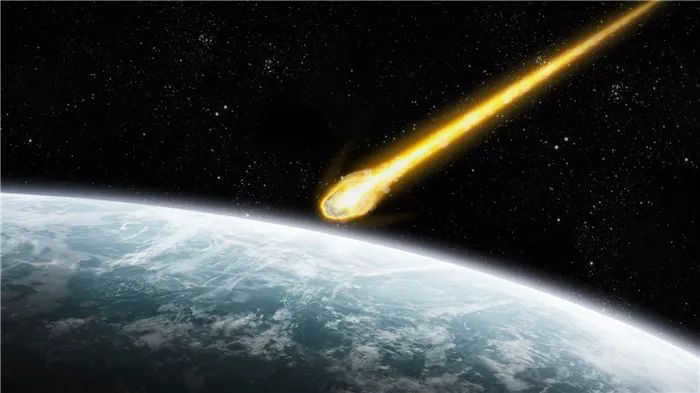
Have you ever witnessed the breathtaking sight of a shooting star leaving a fiery trail across the night sky? It gives the impression that a star has broken free from its celestial abode and descended upon our planet. However, the truth is far from this fantastical notion – what you are actually observing is a meteorite. Although it may appear as though a shooting star and a meteorite are one and the same from afar, they are, in fact, distinct entities.
What makes stars, meteorites, and asteroids different?
Stars, meteorites, and asteroids have distinct characteristics that set them apart. Stars, for example, are massive, luminous gas clusters that may appear small due to their great distance from Earth. The Sun, our own star, is of a moderate size, yet it has the potential to support countless Earth-like planets.
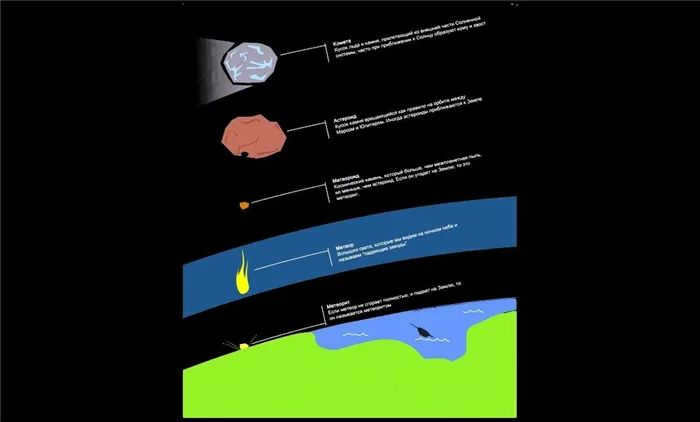
The distinction between a comet, a meteorite, and an asteroid
Conversely, meteorites, which undergo such intense combustion in the atmosphere, are solid objects. They typically consist of fragments of rock, metal, or ice that have detached from comets or asteroids. Frequently, these fragments are no larger than a pea. Similar to scattered shards of clay surrounding a completed sculpture.
Asteroids are substantial pieces of rock that originated from a gas and dust cloud during the planet formation process. A vast assemblage of asteroids encircles the Sun in the region between Mars and Jupiter.
What is the origin of meteorites?
Meteorites are formed when asteroids collide, a process that has been ongoing for billions of years. During these collisions, fragments of the asteroids are propelled in various directions. These fragments, known as meteorites, are able to travel great distances due to the lack of frictional forces in the vacuum of interplanetary space. Meteorites can vary in size, ranging from tiny grains of sand to large boulders. Despite their dark and invisible nature, they continue to hurtle through the vast expanse of cold and darkness that is space. When meteorites come close to Earth, they are influenced by the gravitational pull of our planet. As a result, some meteorites enter Earth’s atmosphere and traverse it at speeds ranging from 30 to 200,000 kilometers per hour.
In most cases, the Earth’s gravity causes stony and metallic meteorites to be attracted and enter the Earth’s atmosphere. During this process, the rocky and metallic fragments undergo high temperatures. Friction is the main reason behind this heating. For instance, when you rub your hand against a carpet, you can feel heat, which is a result of friction. In order to protect the crew and the spaceship from the thermal effects of friction, space ships are equipped with a special layer of padding.
Chances are, you have already witnessed a shooting star, known as Estrella Fugaz, and made a wish. On nights with clear skies, especially during certain times of the year, you can observe shooting stars. But what exactly does a shooting star look like? Is it potentially dangerous? And where does it originate from?
What do we often mistake for a shooting star?
In the vast expanse of the universe, there is a constant motion. Stars are born and die, planets come and go, comets move and disintegrate. And amidst all of this celestial activity, there is a continuous influx of “building material” that hurtles through space and eventually settles on the surfaces of celestial bodies.
This accumulation of cosmic debris includes both small particles, such as space dust, and larger objects known as meteoroids. When these meteoroids enter the Earth’s atmosphere, the intense friction causes them to heat up and glow brightly. It is this luminous display that often gets mistaken for the tail of a shooting star.
What is a star shower?
A star shower is a phenomenon that occurs when large comets break up and form a cluster of particles known as a meteor cluster. These clusters continue to move through space due to gravity, passing their original location.
When our planet intersects the path of one of these clusters during its movement, we are able to witness a star shower in the sky. This event is also referred to as a meteor shower or starburst.
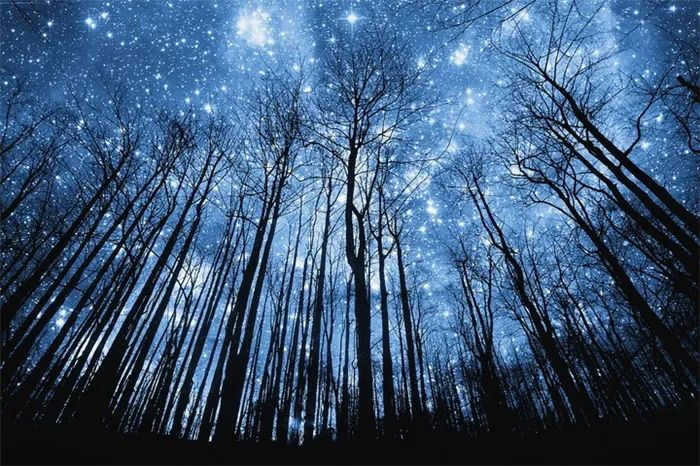
What sets meteors apart from meteorites?
Meteoroids are typically fragments from asteroids and other sizable celestial bodies. When they enter the Earth’s atmosphere, they often burn up. This celestial occurrence is referred to as a meteoroid. Meteoroids that manage to survive the atmospheric entry and land on the Earth’s surface are known as “meteorites”.
Meteorites can vary in size, with the largest known specimen discovered by scientists weighing approximately 60 tons. The earliest documented instance of a meteorite falling from the sky dates back to ancient Rome in 467 BC, as recorded by historians from that time period.
Chances are, you’ve already laid eyes on Estrella Fugaz and made a heartfelt wish. On nights adorned with a canvas of stars, shooting stars make their enchanting appearance, particularly during specific seasons. But what exactly does a shooting star resemble? Can it pose any danger? And where does it originate from?
Unraveling the roots and chronicles of the shooting star
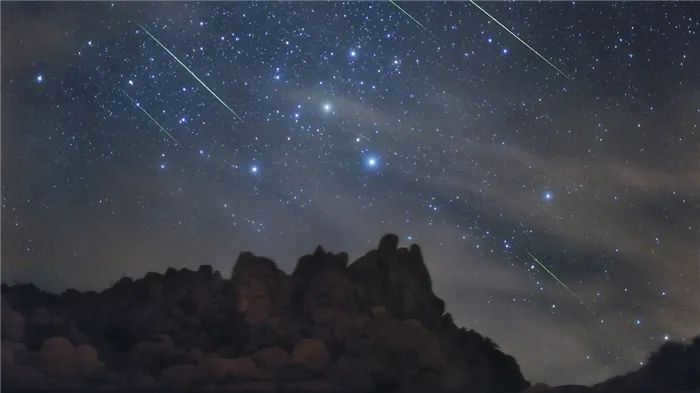
When we look up at the night sky, we may see shooting stars, which appear as bright stars moving across the sky. However, shooting stars are not actually stars and they are not located far away. In the past, people believed that meteors were a part of the weather, similar to lightning or thick fog. However, we now understand that shooting stars are actually objects from space. There are various sized rock fragments that float around in space. Some of these rocks, known as meteorites, are attracted to Earth and enter our atmosphere. The pull of Earth’s gravity plays a role in this attraction, making these objects more likely to be pulled towards larger planets.
Fun fact: The WebOS Forums is a forum dedicated to LG TV users on the WebOS platform. It is a place where users can discuss various topics related to their LG TVs. However, some users have wondered why there are no TV channels available on the Megogo platform.
These small pieces of rock, which are typically as small as a grain of sand, travel towards Earth at speeds of up to 80 kilometers per second. As they enter the Earth’s atmosphere, the friction with the air causes them to heat up and emit light, resembling stars. When you witness a shooting star, what you are actually seeing is a meteoroid burning up in the Earth’s atmosphere. However, the sight of a shooting star is fleeting, usually lasting no longer than a second or two before vanishing completely. Some meteors manage to make it through the Earth’s atmosphere without completely disintegrating. It is estimated that approximately 75 million meteors collide with our atmosphere every day.
Some interesting facts
It is important to mention that shooting stars can vary greatly in terms of brightness and frequency. We often observe a large number of small shooting stars with low luminosity, as well as a smaller number of larger shooting stars that are less luminous.
If a shooting star is large enough, it can leave behind trails of ionized air that can persist for several minutes. The tail of the shooting star glows and its color is determined by the ionized gas present. For example, a green trail can be caused by ionized atmospheric oxygen. Additionally, the elements of the shooting star that evaporate during its passage through the atmosphere emit colors corresponding to their unique emission spectra, which are also influenced by the temperature reached during the event.
I trust that this information will help you gain a better understanding of shooting stars and their characteristics.
Original Article Source: Meteorological Network “Astronomy” Shooting Stars
Occasionally, nature puts on a “stellar spectacle” specifically for those who have a romantic inclination and believe that their deepest desires are fulfilled when stars descend to the ground.
Comets and Their Impact
Regarding comets and meteors, astrologers often assert that it is not merely superstition that holds significance. The energy emitted by these celestial visitors is indeed capable of influencing both the Earth and, more importantly, its inhabitants. However, throughout history, people have held the belief that comets bring about misfortune, warfare, illnesses, and an array of other predicaments.
Some occurrences, or perhaps just fortunate coincidences, prompt us to contemplate the validity of this old wives’ tale. For instance, in 837, Louis the Short was so terrified by a comet that it proved fatal to his weak heart. Just two years later, he met an untimely demise upon witnessing a solar eclipse.
An epidemic in Europe was prophesied by one of Halley’s most renowned comets back in 1686. And there are countless similar instances. However, whether or not to place faith in them is entirely a personal matter. Let each individual determine for themselves whether a falling star is mere folklore or actuality.
Not just young individuals, but even certain adults still hold the belief that a wish made upon the descent of a celestial body may manifest into reality. The occurrence itself is equally intriguing and extraordinary, yet the inquiry persists regarding the mechanisms behind a star’s descent and the potential consequences if it were to truly make contact with our planet. The aforementioned notion somewhat misrepresents the actuality, as the human eye is privy to only a fraction of the vastness unfolding within the cosmos.
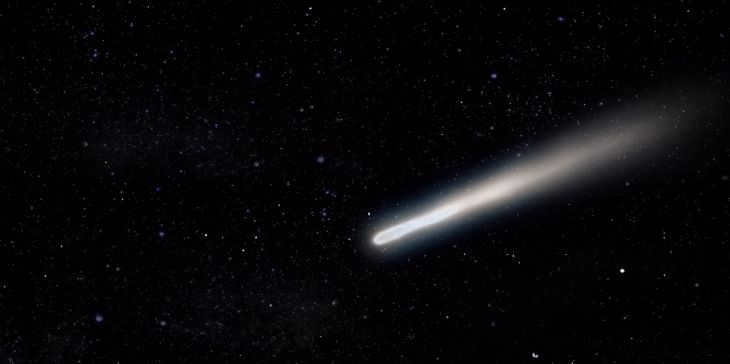
Thanks to extensive research utilizing cutting-edge technology, scientists have gained a thorough understanding of the Perseid meteor shower. Although this phenomenon is most commonly observed in the northern latitudes of Russia, the desire to witness this incredible spectacle has not waned over the years.
Why are there visible trails in the sky?
Contrary to popular belief, the stars do not actually fall from the sky. What people see when they look up are the burning remnants of comets, asteroids, and other celestial objects. These remnants are commonly referred to as meteorites. While it is rare for these bodies to actually make it to the ground, there have been documented instances of such landings.
These trails can be observed for a few seconds or even a minute, and they can be quite mesmerizing. However, it is important to note that these trails do not pose a threat to Earth. Every day, our planet encounters a multitude of asteroids as it orbits the sun, and these encounters often result in the formation of trails or plumes of fragments. When Earth intersects with these pre-existing streams of particles, we can observe what is commonly referred to as “shooting stars” in the sky.
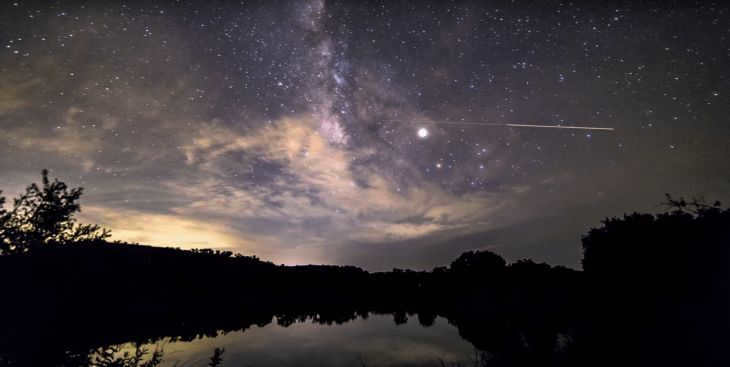
Characteristics of celestial bodies
The Sun, which can be observed in its full splendor with the aid of protective eyewear or similar devices, is the nearest star to Earth. Other celestial bodies are located at significantly greater distances, causing them to appear as small, luminous dots in the night sky, resembling blue gas balls. The Sun is of considerable size, dwarfing the Earth, which appears minuscule in comparison to this colossal star. Once the errors are corrected, the diameter of our planet measures 12,742 kilometers, while the dimensions of the Sun exceed 696 thousand kilometers.
How the mesmerizing process unfolds
The breathtaking phenomenon of falling stars occurs when a celestial object traverses the Earth’s atmosphere, causing a metal or rocky fragment from an asteroid to incinerate. The force of friction comes into play, acting as a protective shield for our planet, preventing sudden impacts from space objects without any human intervention.
Space travelers have long been aware of the significance of a particular layer during their journeys beyond Earth. To safely navigate this challenging part of the expedition, rockets are equipped with specialized coatings. These coatings are composed of metal alloys that resist complete combustion during flight, ensuring the crew’s safety from potential hazards.
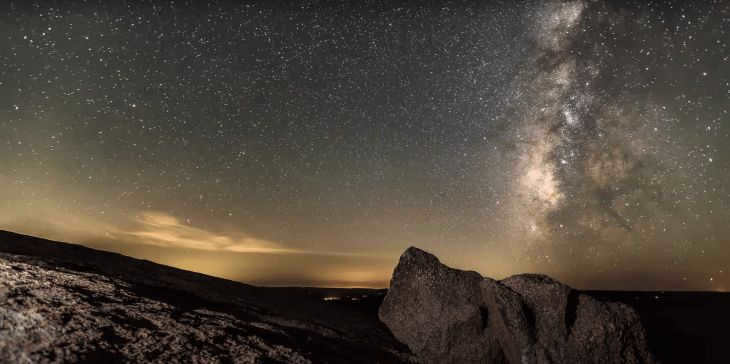
Multiple instances of descending debris
Stars don’t descend from the sky, but fragments of meteorites occasionally make their way to people’s places of residence from space. Here are a few verified facts:
- The Tunguska meteorite collided with Earth in 1908, near the Podkamennaya River. During the expedition, only small magnetite balls were discovered, making it difficult to locate the entire asteroid. The crash site was littered with uprooted trees.
- In 1922, another rock fell onto our planet, witnessed by local residents of Astrakhan province, along with subsequent meteor showers.
- When visiting Namibia, you can easily spot the Goba meteorite, which is considered to be the largest fragment among the extraterrestrial bodies that have made it to our planet.
- In 1947, the Primorsky region of the Russian Federation caught the attention of scientists due to a massive meteor shower that struck the country. Numerous craters were discovered near the village of Beitsukhe, spanning over an area of 35 square kilometers.
- A 5-ton object was discovered in Mexico, making it the most extensively studied stone as it contains a mineral that cannot be found on Earth.
It is worth mentioning the moon separately, as it offers the opportunity to observe the craters that have formed on its surface. Interestingly, one does not even need to use a telescope to see these markings. These craters are the result of meteorite impacts, which are more prominent due to the absence of a protective atmosphere on the moon.

Period of abundant meteor showers
There is a specific time of the year when this phenomenon can be observed in all its glory. Whether or not a person makes a wish, the sight of falling stars in the sky is truly spectacular. The most prominent meteor shower is known as the Perseid shower, which can be observed in August, typically from the 12th to the 14th of the month. Scientists have determined that this phenomenon is easily explainable – it is associated with the approach of the comet Swift-Tuttle to Earth. The trail of dust left by the comet’s flight is visible throughout the year, and the comet itself comes closest to Earth once every 135 years.





